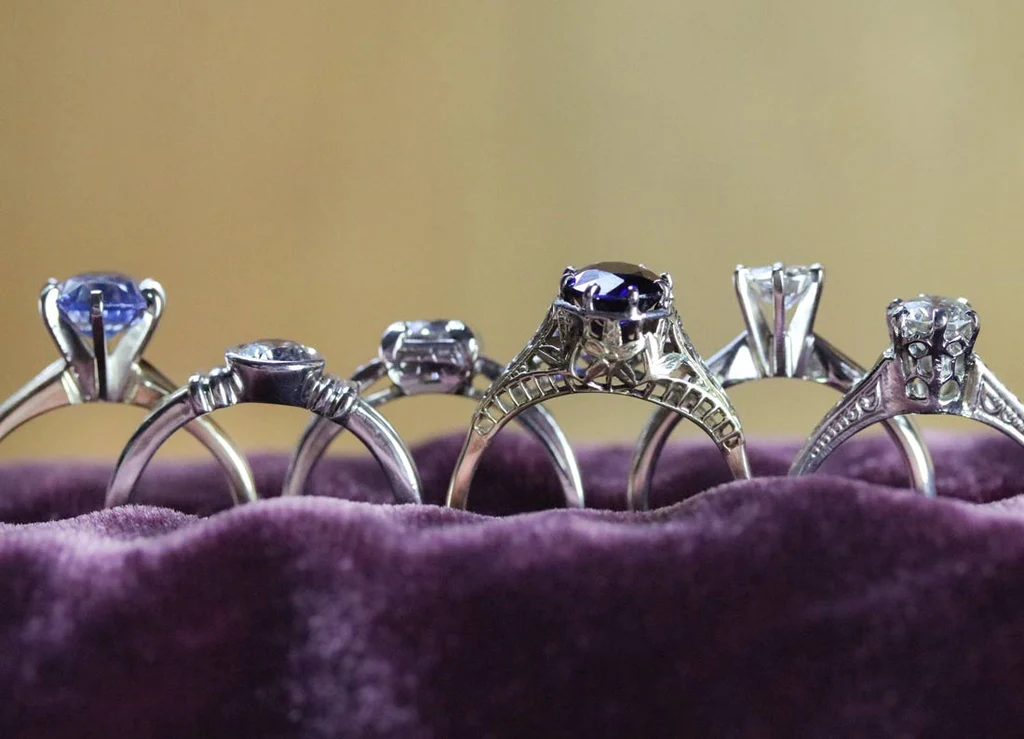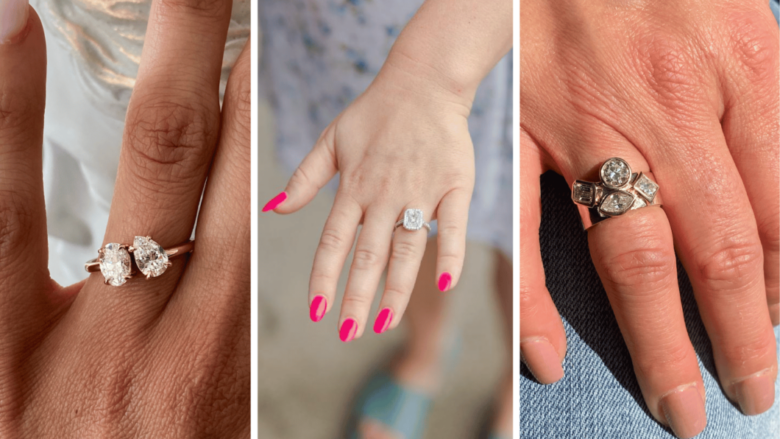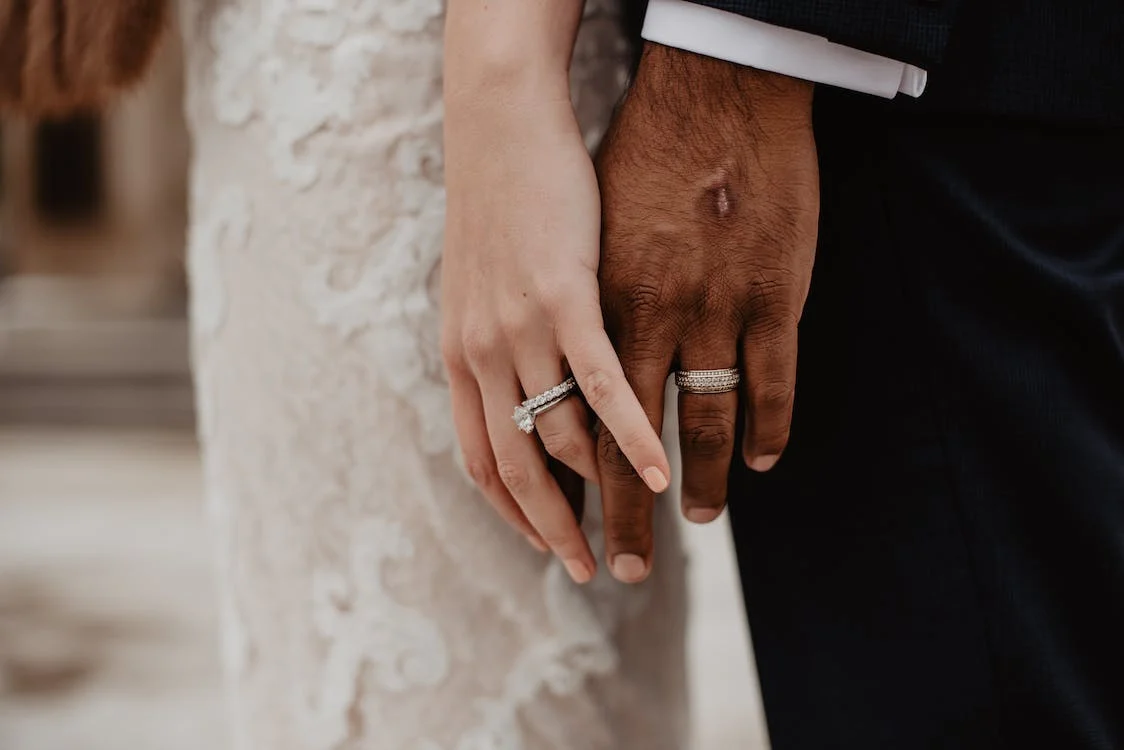Most cultures utilize engagement rings for betrothed couples but traditions and styles may vary from culture to culture. Even within the U.S., engagement ring styles have evolved over the past century until today. Today’s couples have plenty of possibilities, including the rise and popularity of lab grown diamond engagement rings.
Contents
- Victorian Era (19th Century)
- Art Nouveau and Edwardian Eras (Late 19th to Early 20th Century)
- Art Deco Era (1920s and 1930s)
- Mid-20th Century (1940s to 1960s)
- The 1970s and 1980s
- The Minimalist and Vintage Revival (1990s to Early 2000s)
- Modern Trends (2000s to Present)
- Sustainable and Ethical Considerations
- Customization and Personalization
- A Sparkling Journey
Victorian Era (19th Century)

Rings from this era are known for gorgeous silver, rose gold, or yellow gold, intricate metal work, and time-worn patina. Engagement rings featured diamonds, pearls, and colored stones. The gem cutting process wasn’t as refined as it is today, so the gemstones are chunkier because they were cut by hand. Rings also featured brightly colored gems in their ornate designs. Rings were made by hand making each one unique and special.
Early Victorian era rings featured Celtic-type designs and milgrain detail. Late era designs looked more elegant and less gaudy, with popular design motifs being geometrical shapes, a range of flowers, shells, acorns, birds, insects, stars, bees, and hearts. They also featured more diamonds than early era rings.
Art Nouveau and Edwardian Eras (Late 19th to Early 20th Century)
Engagement rings from this time period were artistic and expressive. Settings featured ornate, but had flowing curves, intricate filigree work, scrollwork, and floral motifs. Many rings were in platinum rather than gold like previous eras. They often feature diamonds as the center stone, surrounded by intricate metalwork and gemstone accents. Art Nouveau engagement rings were inspired by nature, so you’ll see curves, color, florals, and other nature-inspired motifs.
Art Deco Era (1920s and 1930s)

Source: destinationido.com
Engagement rings in the Art Deco era featured geometric and symmetric designs with plenty of diamond-crusted bands and filigree work. Popular cuts of this era were geometric shapes like triangles, squares, rectangles, and circles. Emerald cuts were especially popular during this era because of their lines and geometric looks. Diamonds continued to be the gemstone of choice for engagement rings but were accented by side stones, such as baguettes, that mixed different geometric shapes. Platinum also remained a popular metal during the Art Deco era.
Mid-20th Century (1940s to 1960s)
World War II impacted many aspects of the world, including jewelry styles. Engagement rings of this time were more practical, simple, and modest. Yellow gold became more popular during this time period as well as round brilliant center stones. The most popular engagement ring of the 1950s was a solitaire stone with diamond baguettes on the sides. Settings featured intricate designs, like leaves, flowers, bows, or hearts, to settings to make up for smaller stones.
The 1970s and 1980s

Geometric, bold designs became more popular during this time period. More extravagant rings were sought after. One reason extravagant rings became more popular were celebrity-inspired ring designs, such as Princess Diana’s sapphire and diamond cluster ring. Another noteworthy piece of this time period was the emergence of the princess cut. Although the square princess cut emerged in the 1960s, it didn’t become popular until the 1970s. The look of the time was a square diamond worn as a solitaire or with tapered baguettes to the side.
The Minimalist and Vintage Revival (1990s to Early 2000s)
By the 1990s, engagement rings were more minimal and set in white gold or platinum rather than yellow gold. The round brilliant solitaire was a popular engagement ring style in this era. A trend that emerged in the 2000s was the halo ring, where the center stone is surrounded by a circle of smaller diamonds. The pavé band became more popular as well. An interest in vintage and antique rings increased in this time period as well.
Modern Trends (2000s to Present)
Couples today have so many engagement styles to choose from, and they can easily browse different settings online. Engagement ring trends seem to trickle down from celebrities and social media influencers. Couples can create custom designs based on their favorite celebrity designs or a design that they’ve dreamt about and can make a reality. Couples have plenty of ring options!
Sustainable and Ethical Considerations

Source: pexels-a
There’s a growing interest in the ethical implications behind purchasing diamonds. Many couples also prefer lab diamond engagement rings as they are more sustainable options. You’ll find more ethically-conscious and environmentally-friendly options, with lab diamond engagement rings, and colored gems being the top options.
Customization and Personalization
In addition to custom designing your engagement ring, you have other options to personalize it from selecting the metal to the type of gemstones to the size of the center stone. More men and women want rings that represent their individuality and personal taste.
A Sparkling Journey
It’s eye opening to take a journey through history by examining the popular engagement rings from each time period. Engagement rings have evolved tremendously over the past century with lab grown diamond rings gaining prominence as more affordable and ethical options. Each era has particular characteristics that make rings from that period stand out. Some eras featured ornate milgrain while others featured bold, geometric gemstone shapes. Simpler rings were more popular during wartimes and then emerged again as popular styles in other eras. Today’s couples have diverse engagement ring options that you can customize to make it your own. And if they can’t find the ring they want, then they can custom design their own unique design. For couples concerned about the ethical and environmental impact of diamonds, they can select lab grown diamond engagement rings or look for recycled metals.
